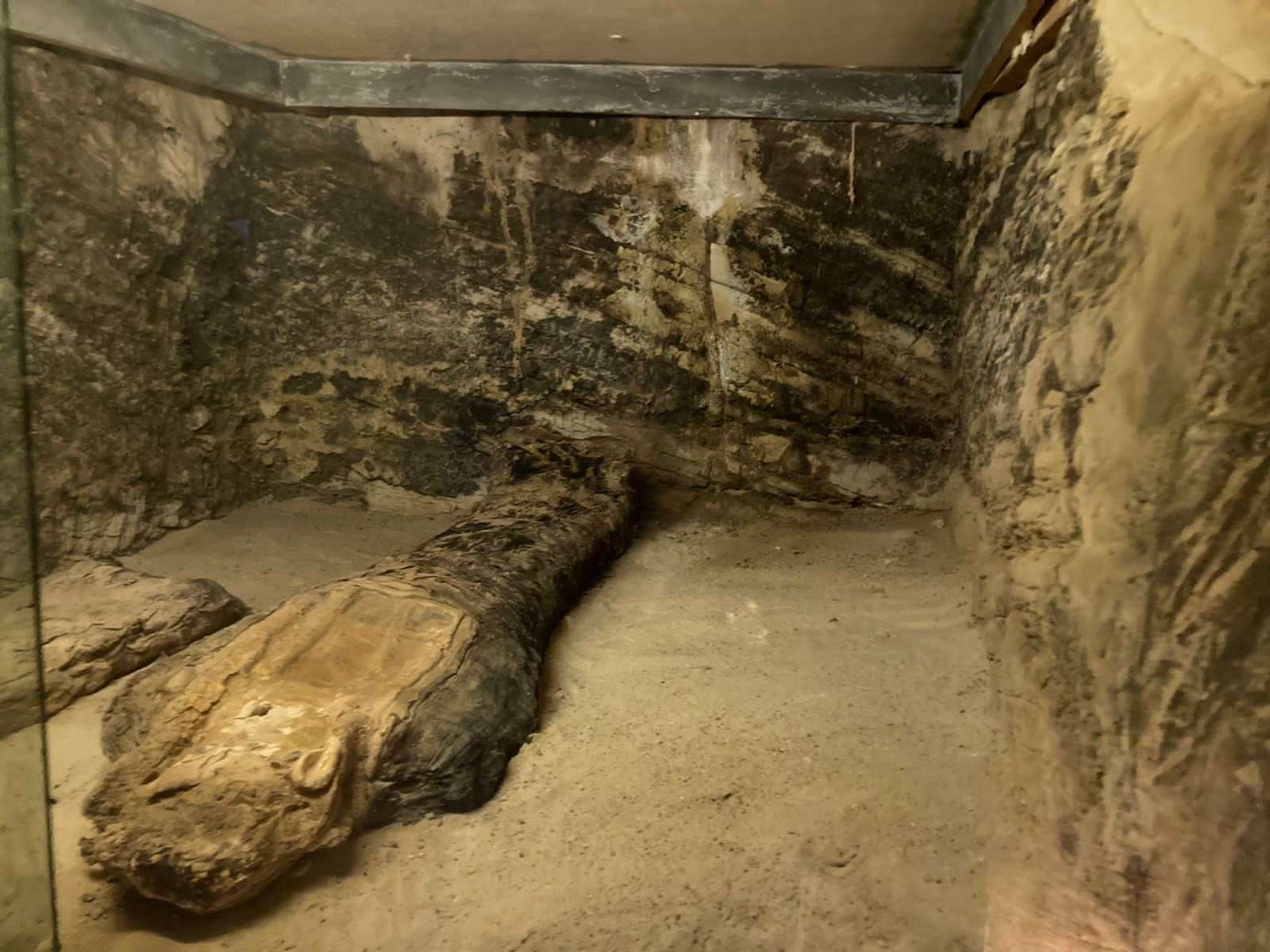Giza Governor Ahmed Rashed, the Head of the Central Administration of Cairo and Giza Dr. Mohamed Shiha, and the Director of the Technical Office of the Supreme Council of Antiquities' General Secretary Dr. Atef Al Dabbah opened the tomb of the Golden Mummies Vallثy that was unearthed by the renowned Egyptologist Dr. Zahi Hawass in 2000.
On his side, Al Dabbah highlighted that the Golden Mummies were found in 1996, and it is considered the second biggest archaeological discovery in the 21st century after Tutankhamun's tomb discovery.
He added that the coffins date back to the Greco-Roman era, and it includes about 250 mummies, the majority of them belonging to the upper-class families that lived at that time.
The unearthed mummies that had masks, and inscriptions in Ancient Egyptian language, alongside religious texts were found by Hawass, according to Essam Abdel Fattah, the head of Maritime Oases' Antiquities administration.
The importance of this discovery lies in shedding the light on a vital era in the history of Egypt which is the beginning of the Roman era.
Regarding the story of unearthing this site, it happened by chance when the donkey of Alexander the Great's temple guard messed in a hole and trapped into it which drove Sheikh Abdel Maugoud, the guard, to check the hole.
Later on, he saw a golden object shines in the heart of darkness, so, he reported to the director of the Maritime Oases Antiquities Administration that's why it is called the Valley of Golden Mummies, as the mummies had golden masks on their faces.
After that, archaeologists did an initial scanning for the site, next, they informed Hawass who started the excavation in 1999 to unveil a huge number of golden mummies reaching about 250 mummies.
All of them date back to the first or the second century when Egypt was under Roman rule, and all of them proved the presence of Ancient Egyptian religious rituals regardless of the emergence of Greco-Roman culture at that time, and they carried hieroglyphic inscriptions and religious signs.
Contributed by Rana Atef















